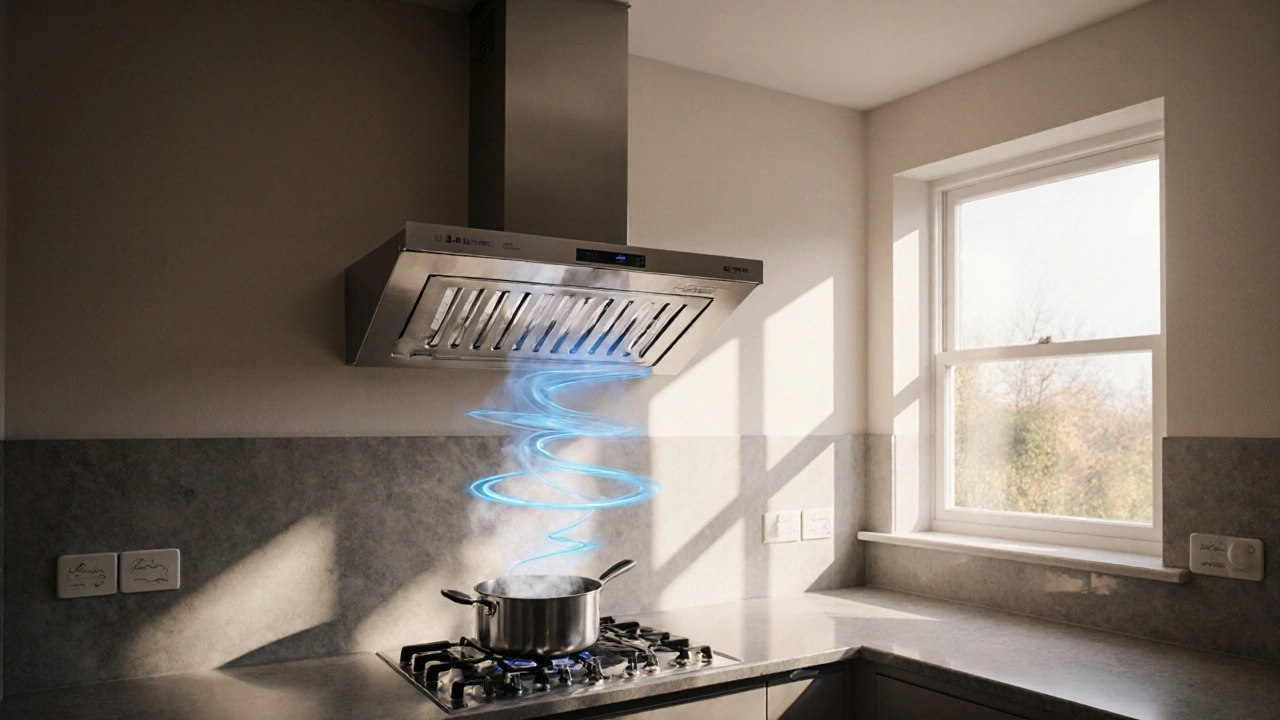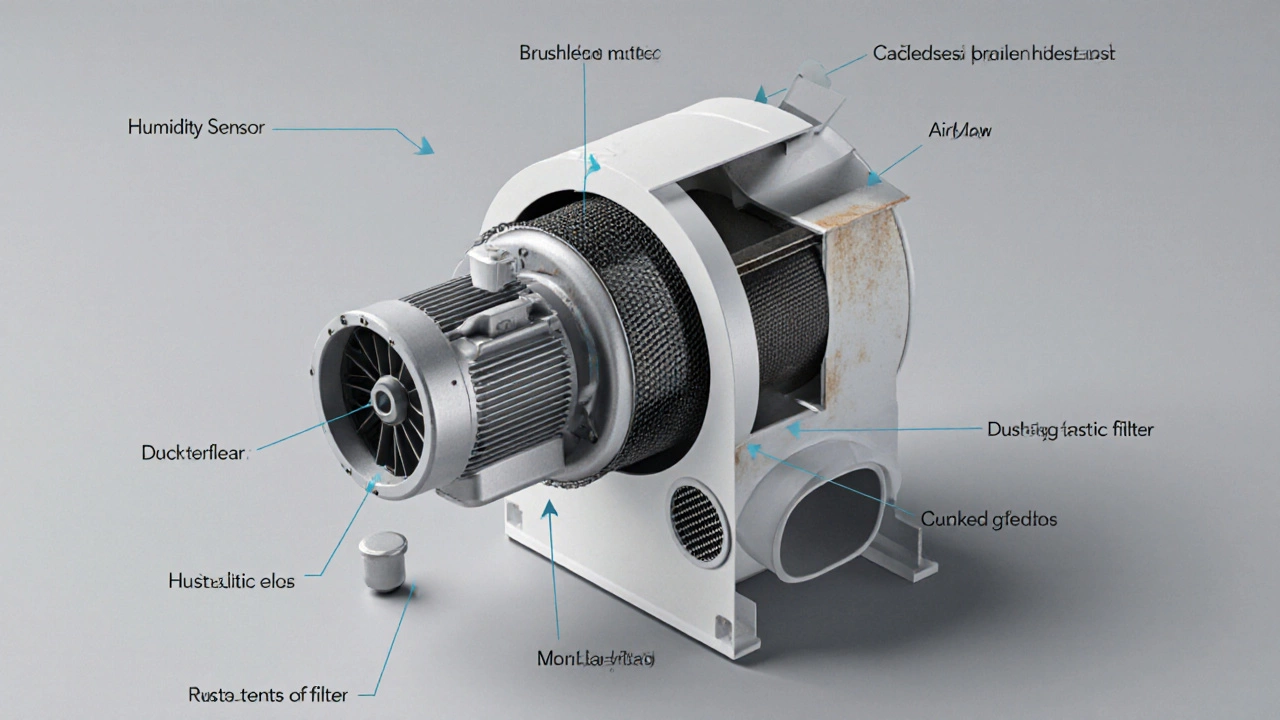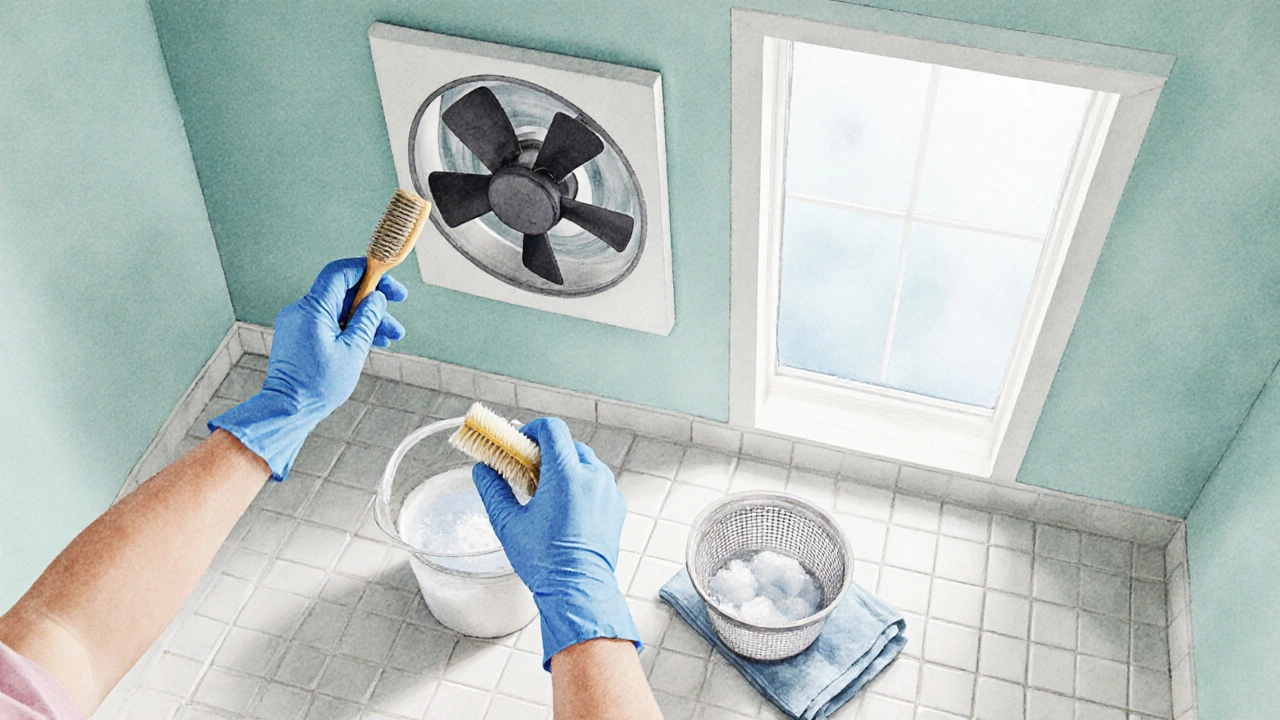
- 23 Oct 2025
- Gideon Thornton
- 0
Extractor Fan Lifespan Calculator
Your Fan Details
Maintenance & Environment
Maintenance Tips for Long Life
Regular maintenance can extend your fan's lifespan by 2-4 years. Clean filters monthly, wipe blades quarterly, and inspect ducts annually. Using a humidity-controlled switch reduces unnecessary cycles.
Learn More MaintenanceWhen it comes to keeping kitchens and bathrooms fresh, Extractor fan is a ventilation device that expels moist or odorous air to the outside of a building. Homeowners often ask how long these fans actually work before they need a replacement. The answer isn’t a one‑size‑fits‑all number; it depends on the fan’s type, how often you run it, the environment it lives in, and how well you look after it. Below you’ll find a step‑by‑step breakdown that will help you gauge the expected life of your fan, spot early warning signs, and extend its service years.
Key Factors that Influence Fan Longevity
- Usage frequency - A fan that runs 30 minutes after every shower or cooking session accumulates wear faster than one that’s only used occasionally.
- Operating environment - High humidity, grease splatter, and salty sea‑air can corrode components sooner.
- Motor quality - The motor is the heart of the fan; sealed‑bearing or brushless designs tend to outlast cheap brushed motors.
- Ventilation duct condition - Blocked or undersized ducts force the motor to work harder, shortening its life.
- Filter maintenance - Built‑in carbon or mesh filters catch grease and dust; a clogged filter raises temperature and motor stress.
Typical Lifespan by Fan Type
Not all extractor fans are built the same. Here’s a quick snapshot of the three most common styles you’ll find in UK homes.
| Fan Type | Average Lifespan (years) | Installation Difficulty | Typical Airflow (CFM) | Noise Level (dB) | Cost Range (£) |
|---|---|---|---|---|---|
| Ceiling‑mounted fan | 8‑12 | Moderate (requires cutting a ceiling hole) | 70‑110 | 35‑45 | £80‑£150 |
| Wall‑mounted fan | 6‑10 | Easy (fits a wall cavity) | 50‑80 | 30‑40 | £60‑£130 |
| Inline fan | 10‑15 | Hard (requires ductwork planning) | 120‑200 | Low (quiet because it’s hidden) | £120‑£250 |
These figures are averages from manufacturers and field technicians in the UK as of 2025. Your own experience may vary, but the range gives a realistic baseline for budgeting.
Early Warning Signs That Your Fan Is Nearing the End
- Reduced airflow - You notice steam lingering after a shower or cooking fumes not disappearing quickly.
- Unusual noises - Grinding, rattling, or a high‑pitched whine often indicates motor wear or loose mounting.
- Frequent overheating - The fan shuts off automatically or feels hot to the touch after short runs.
- Visible corrosion - Rust on the housing or on the ventilation duct connections.
- Electrical issues - Intermittent power loss, flickering lights on the control switch, or a burnt smell.
If you spot any of these symptoms, schedule a repair check before the fan fails completely.
Maintenance Practices That Add Years to Your Fan
- Clean the filter monthly. Remove the mesh or carbon filter, tap out dust, and wash with mild detergent. A clean filter lowers motor temperature by up to 15 %.
- Wipe the fan blades and housing every 3-4 months. Grease from cooking can build up and unbalance the rotor.
- Inspect the humidity sensor (if equipped). Dusty sensors may trigger the fan too often, increasing wear.
- Check the duct for blockages. Run a flexible brush through the duct annually to keep airflow smooth.
- Turn the fan off when not needed. Use a timer or humidity‑controlled switch to avoid unnecessary cycles.
Following this simple routine can push a typical ceiling‑mounted fan from 10 years to 12‑14 years of reliable service.
Cost of Replacement and How to Budget
A new extractor fan costs anywhere from £60 for a basic wall‑mount to £250 for a high‑flow inline unit. Installation labor in the UK averages £70‑£120 per hour, with most jobs taking 1-2 hours. Expect a total outlay of £150‑£400 for a standard replacement.
When budgeting, consider the long‑term energy savings of a more efficient model. Modern fans with EC motor technology use up to 30 % less electricity, which can offset the up‑front cost within 2‑3 years.

Estimating Remaining Useful Life
One practical way to gauge how many years you have left is to calculate the fan’s cumulative operating hours.
- Check the manufacturer's rated lifespan in hours (most UK specs list 30,000-50,000 h).
- Track average daily use. For example, 1 hour per day × 365 days = 365 h per year.
- Divide the rated hours by annual usage. If a fan is rated for 40,000 h and you run it 365 h yearly, you have roughly 110 years of theoretical life - but real‑world factors (dust, humidity, motor quality) typically cut that to about one‑third.
So, a fan with a 10‑year average lifespan running 1 hour daily likely has about 3-4 years of practical life remaining after hitting the 10‑year mark.
Choosing a Fan with Longevity in Mind
If you’re buying a replacement, prioritize these attributes:
- Motor type: Brushless or sealed‑bearing motors are the most durable.
- Material: Stainless‑steel housings resist corrosion better than plain steel.
- Adjustable speed: Low‑speed settings reduce wear when full airflow isn’t needed.
- Self‑cleaning filters: Some premium models offer washable filters that stay effective for years.
While the upfront price may be higher, a well‑chosen fan can last 12‑15 years, giving you a better return on investment than a cheap unit that quits after 5 years.
Quick Checklist for Extending Fan Life
- Clean or replace the filter every 4‑6 weeks.
- Wipe the blades quarterly to remove grease.
- Inspect ductwork yearly for blockages.
- Use a timer or humidity switch to avoid unnecessary runs.
- Schedule professional service at the 5‑year mark for a full inspection.
Follow these steps and you’ll get the most out of your fan’s useful years.
How often should I replace the filter in my extractor fan?
For most kitchen fans, clean or replace the filter every 4‑6 weeks if you cook daily. In low‑use bathrooms, a 3‑month interval is usually enough.

Can I install an extractor fan myself?
If you’re comfortable with basic electrical work and have the right tools, a wall‑mounted fan is a DIY‑friendly option. Ceiling‑mounted and inline units often need professional mounting to meet UK building regulations.
Why does my fan make a rattling sound?
Rattling usually means a loose mounting bracket or debris caught in the fan blades. Tighten the screws and clean the interior; if the noise persists, the motor bearings may be worn.
What airflow rating (CFM) do I need for a small bathroom?
A 50‑70 CFM fan is sufficient for bathrooms up to 5 m². Larger spaces benefit from 80‑100 CFM to clear humidity quickly.
Is it worth upgrading to a brushless motor fan?
Yes. Brushless motors run cooler, consume less power and often carry a 3‑year warranty, which translates into a longer service life compared with brushed counterparts.


